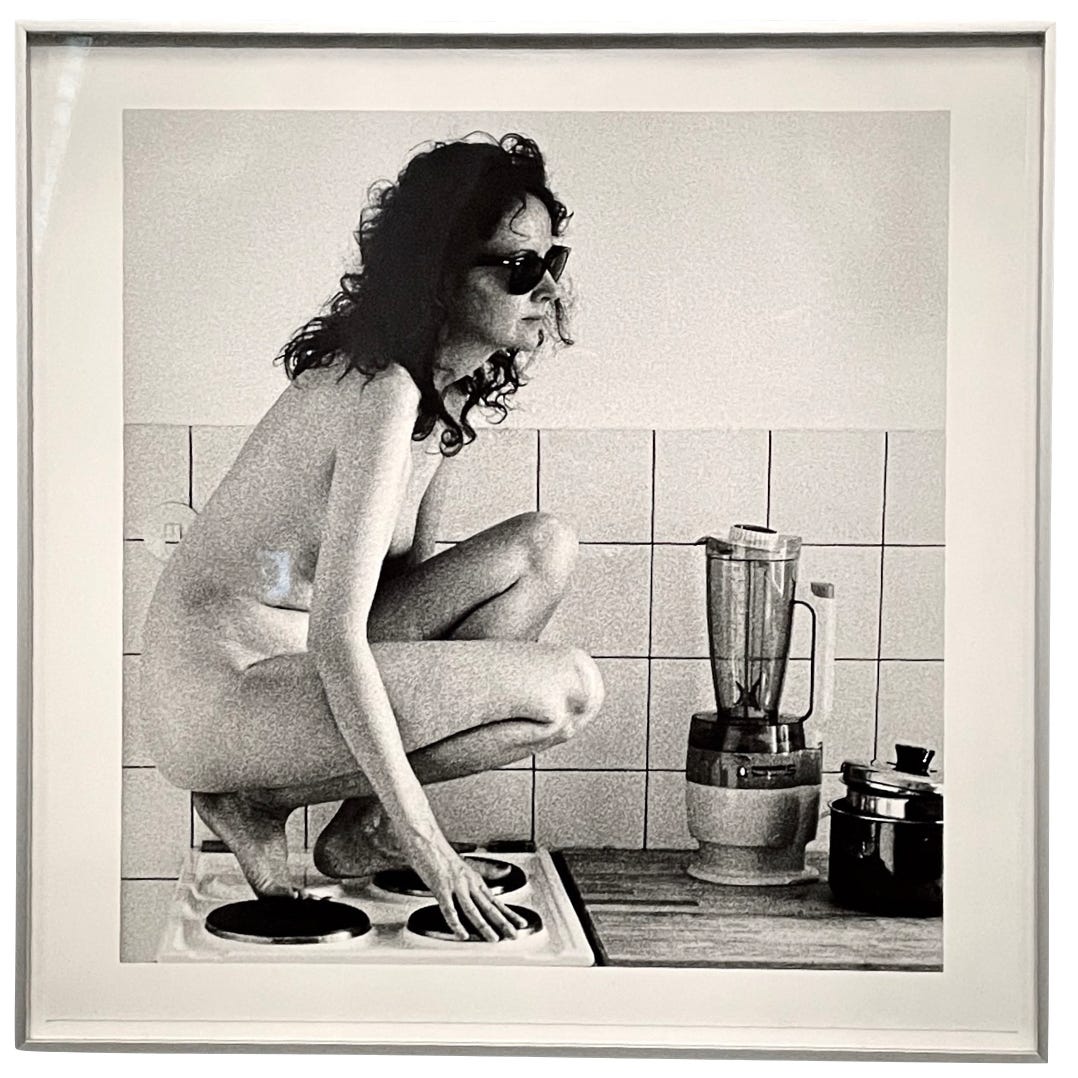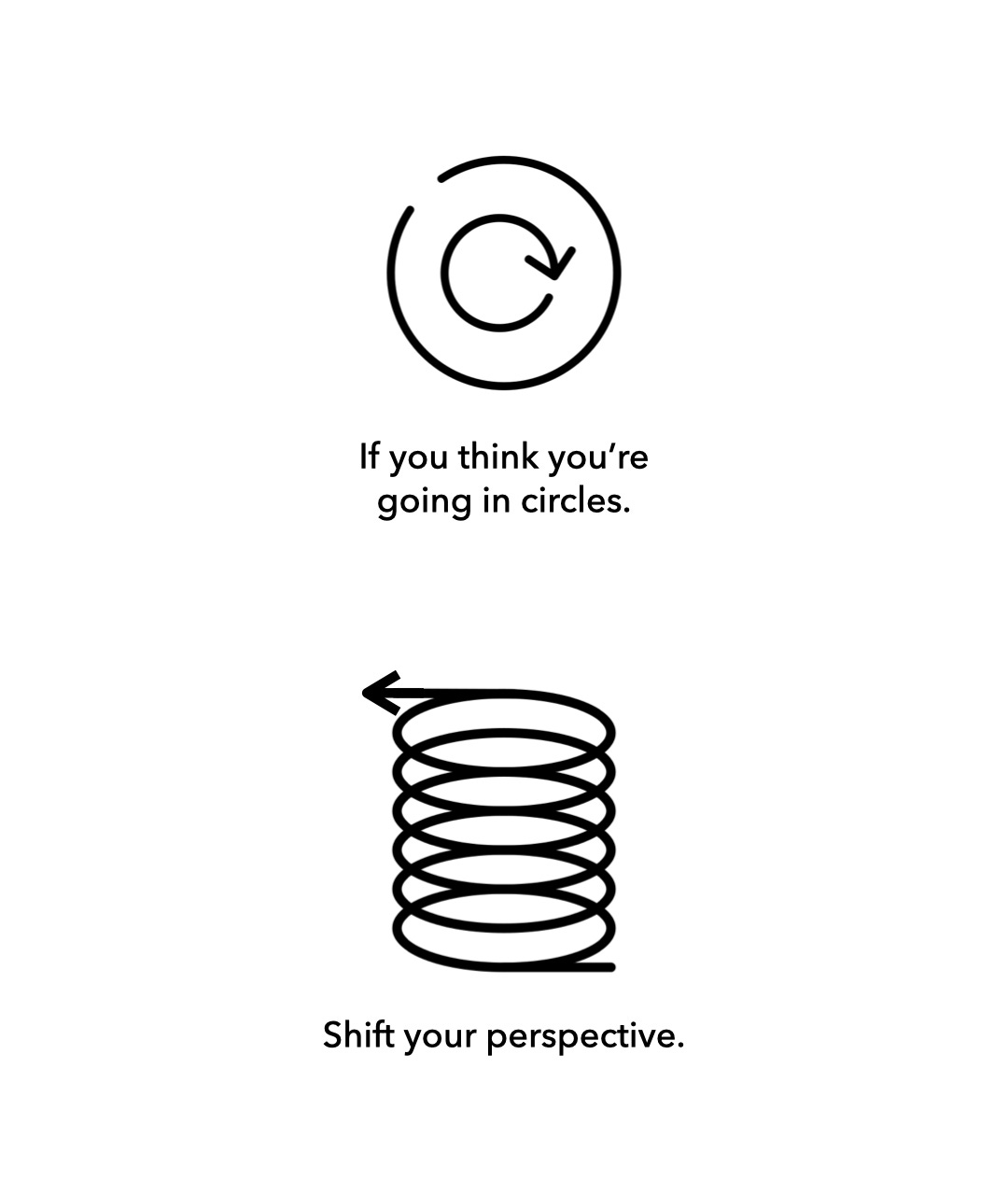The purpose of transitions
The unpretty reality of growth and four steps along the way to stay sane.
We are constantly moving toward something, doing something, working to achieve something. We are so obsessed with forward motion that taking a little breather can quickly trigger feelings of missing out on opportunities. Why are stillness and reflection so difficult? Being zen about (work) life may be common sense now-a-days, but it’s far from being common practice.
Is it in our nature to constantly seek the thrill of what’s next?
It gives us hope to believe that tomorrow will have the answers, will be better. That the next step will help us reach our potential. That we need to actively put things into motion or else we’re passive, things happening to us instead of by us.
I have been on a slow, very slow, journey of transition for a few years now. Somewhere along the way I realized that it’s not so much about reaching the next phase as it is about leaving the last one behind me — and leaning into the process more intentionally.
First, let’s be clear: I’m not speaking of the small transitions that take us from A to B, but of the big ones that completely change the alphabet we’ve been using. The big transitions that take us into completely new seasons and chapters of life, new lifestyles or career paths.
Transitions can feel short and brief, or long and winding. It comes with confusion, frustration, doubt. A transition is never a tidy step with a beginning and an end. It’s actually common to have lots of back and forths (believe me, I’ve been there and it is more normal than we like to believe).
So how do we stay sane when all we want to do is fast-forward through the awkwardness? Learning from and analyzing my own periods of transition out of professional curiosity (or compulsion, take your pick), I took a deep look at the not-so-pretty reality of growth and compiled a few insights that might help us embrace our difficult in-betweens.
If you find yourself caught in a state of flux and change, I hope this acts as a guide and makes you feel less alone. I invite you to ponder them, add to them or even pick them apart. Every transition is personal.
Sit with discomfort
If you are feeling off, outside of yourself, unsatisfied or unfilfilled, chances are you are outgrowing something. Some transitions begin with confusion and feelings of displacement or disconnect. You need to sit with your discomfort, look yourself in the eye and understand why something might not be working. And what needs to happen to change it.
We are taught that if we have a goal in sight, we can make a plan to achieve it. But what if we don’t know what we should move toward yet? How do we find out? To gain clarity on what moving forward should or could bring, we first need to specify what we want to leave behind. Sometimes identifying what we don’t want helps us discover the alternative.
I have come to believe that we need to face the discomfort of things past and learn the lessons before we begin forging our path forward.
When we’re questioning our status quo, our environment, our work or even our self, the only truly helpful thing is the hardest to achieve: Look into ourselves and articulate our purpose.
(Oh great, here’s another one with purpose, you might be thinking. And although I am the first person to scoff at buzzwords, bear with me on this one.)
Find your north star
In our modern age of constant forward motion, involuntary stillness or even looking back can be unbearable. But it has its validation.
Reflection is a powerful tool for two reasons:
First, we gain insights from things past, and recognize patterns of thinking and acting. In strategy, we shape insights from data points. In our personal and professional development, these data points are situations, experiences and patterns that we learn from to better understand how we got here.
Second, we can better understand ourselves when we reflect on what has shaped us and what might give us agency moving forward.
So where does purpose come in? Purpose acts as our north star on the undefinable path in front of us. In my own transition, articulating my purpose has been the most difficult exercise. I was familiar with the process of reflection, as I’d made a practice of it throughout the years since my childhood (a result of permanently moving across continents). But not even a career as professional navigator (aka strategist) prepared me for correctly identifying my north star and putting it into words.
(As I write this, I am still working on it, although I do feel I am inching closer.)
Our north star is important because it does more than just guide us. It illuminates our new path. Purpose gives us the clarity to recognize where we need to go. Whether we are pivoting toward a new career or fundamentally changing the environment we work or live in, when we can’t rely on experience because we are moving into an unknown, the purpose of our journey and our contribution is what guides us.
Let me share my own purpose exploration as an example. Through my reflection I realized that I am someone who is constantly evolving and exploring new ideas, concepts and topics. I am fascinated by people, why we act the way we do, how we learn, grow and connect. And I like sharing what I’ve learned to help others. I am also fascinated with how business fits into all this. Knowing this, I now understand why being an expert in my field or helping businesses be more successful has been an unfilfilling goal. Some vital components were missing. My purpose needed to take what drives me into account.
Recognizing what’s important to me (people, learning, exploring ideas, personal meets professional fulfillment, independence) is helping me shape what everyday needs to look like for me. This journey isn’t about reaching a next stage or phase so much as it is about better understanding myself and what I want to and can contribute.
Lean into transition
Transitions are messy, incalculable and not a linear forward motion. Personally, I’ve been back and forth a few times in recent years because of panic, doubts and impatience. Every time I thought I was out of it, thought I was now walking a new path, beginning a new season of my life, I realized that I had merely just finished an episode.
It’s part of a larger problem: We approach everything with the expectation of being a clear-cut, well-organized little building block. Life is a series of messes, mishaps and experiments, all bleeding into one another like paint on an uneven canvas.
When we learn to accept that there are so many external factors that influence what we can control, we begin to lean into the process more fully. “Trust the process.” True words.
Explore the possibilities
Here we are now. We’ve realized that the goal is not clear yet — and we’re ok with that. We’ve let go of our need to control everything — what a relief! We are ready for the fun part: playful exploration.
We can’t think ourselves through everything, no matter how much we want to, especially as knowledge workers. Rolling up our sleeves and getting our hands dirty is the silver lining of transformation.
Think it’s time for a change in industry? Intern or have conversations with people that are doing what you think you might want to do, too.
Curious about leaving the corporate world for a start-up? Listen to interviews or join founder meet-ups to get a better idea of what might await you.
Looking to attract a new audience or move in new circles? Play with formats, join groups and change up the people and profiles you follow. Or do as I did: Get creative and play around with new formats as a way to explore new ways of working.
There is only one rule: Do it for play and out of curiosity. Ditch the performance mindset.
Everyone goes through transitions, but only some of us experience them as deep growth. For all of us, that change is disrupting and uncomfortable. For some of us, we seize it as an opportunity to design our lives and to create more agency for ourselves.
If you find yourself questioning the world, your work, your self, or basically everything, I am here to tell you that you are neither crazy nor depressed. Maybe your transition has already begun and it’s time to lean into it. Step out of your comfort zone and imagine what the future might look like. Then go out and explore the possibilities.
Maybe go with the flow is a good starting point. Or, better yet, surf the flow. After all, we love actively shaping our lives. But maybe it’s less about controlling the process and outcome, and more about our mindset and how we use transitions to learn and grow. I don’t know about you, but that thought feels soothing.



